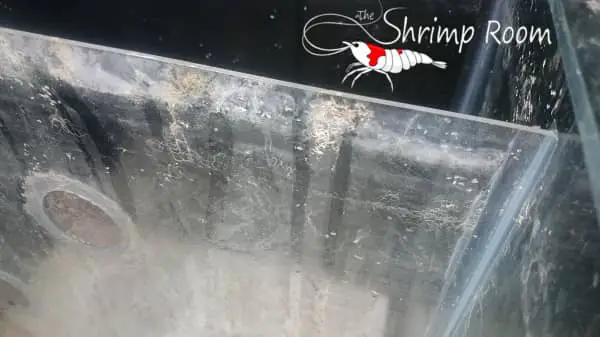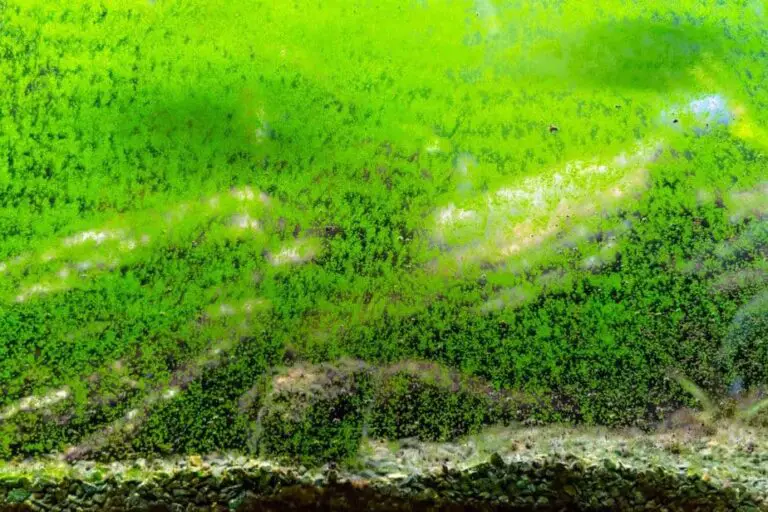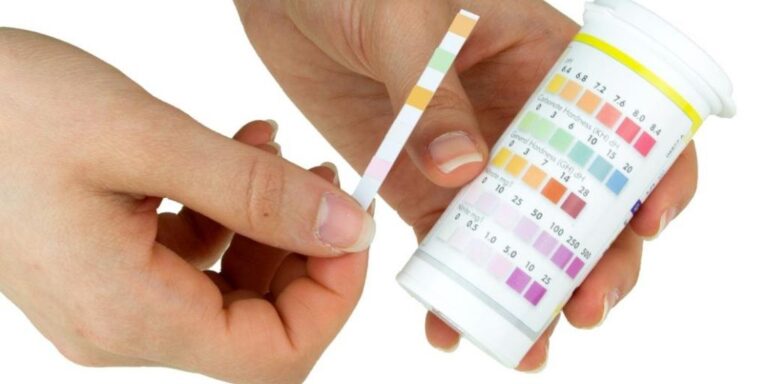How to Remove Calcium from Aquarium Walls?
Removing calcium from aquarium walls is a tricky process. The most effective way to remove calcium deposits is by using an acidic solution such as white vinegar or lemon juice diluted in water.
Begin by unplugging the filter and other electrical equipment then fill the tank with enough of your chosen acid solution to cover all affected surfaces.
Allow it to sit for 10-15 minutes then scrub off any remaining deposits with an old toothbrush or soft cloth.
Empty out the tank, rinse away the acid, and refill before restarting your equipment.
You can also try applying a commercial calcium remover directly onto stubborn areas.
However be sure to follow instructions carefully as these products may contain harsh chemicals that could harm aquatic life if used improperly.
Drain the tank: You will need to drain the tank of all water before you can begin cleaning it.
This is important as any debris or dirt in the tank could interfere with the cleaning process and potentially damage your fish and plants
Scrape off calcium deposits: Once the tank has been emptied, use a scraper or putty knife to scrape away as much of the calcium deposits from the walls of your aquarium as possible.
Be sure to wear protective gloves while doing this step to avoid cutting yourself on any jagged edges left behind by scraping.
Clean with vinegar solution: Fill a bucket with a mixture of 1 part white vinegar and 4 parts warm water.
Then dip a cloth into this solution and wipe down all surfaces inside your aquarium that have been affected by calcium buildup.
Allow this solution to sit for approximately 10 minutes before rinsing it off with clean water, then dry thoroughly using paper towels or an old rag.
Use glass polish & buffing pad: If there are still some stubborn calcium stains remaining after wiping down your aquarium walls.
Apply some glass polish onto these areas followed by scrubbing them lightly with a soft buffing pad until they have completely disappeared from view (be careful not to scratch other surfaces).
Finally, rinse everything again using clean water and allow it time to air-dry naturally before adding new fish back into your newly cleaned environment!

What Will Dissolve Calcium Buildup?
Calcium buildup is a common issue found in many homes, especially those with hard water.
Calcium buildup can form on faucets, showerheads, and other plumbing fixtures, leaving an unsightly residue behind.
There are several ways to dissolve calcium buildup without having to replace the entire fixture or hire a professional plumber.
One of the most effective methods is using vinegar or lemon juice as a natural cleaning agent.
Simply mix equal parts of either liquid with warm water in a bowl and use it to soak any affected areas for about 15 minutes before scrubbing gently with an old toothbrush and rinsing thoroughly with cold water afterwards.
You can also try using commercial products such as CLR or Lime-Away that contain phosphoric acid which helps break down mineral deposits and soften hard water instantly.
If all else fails, consider calling your local plumber who has access to specialized tools designed specifically for removing stubborn calcium buildups from pipes and fixtures quickly and safely!
How Do You Remove Calcium Carbonate from Walls?
Calcium carbonate is a common mineral found on walls, and it can be difficult to remove.
There are some simple steps you can take to rid your walls of this mineral deposit. The best way to start is by using a mixture of water and vinegar.
Simply mix equal parts water and white vinegar in a spray bottle, then spray the solution onto the affected area.
Allow it to sit for at least 15 minutes before scrubbing off with a sponge or brush. For tougher areas, try mixing baking soda into the vinegar-water solution.
This will create an abrasive paste that will help break down harder deposits of calcium carbonate.
After scrubbing away any residue, rinse off your walls with clean water and let them dry completely before painting over them if desired!
What is the White Stuff on My Aquarium Wall?
The white stuff on the walls of your aquarium may be a type of algae or biofilm growing in the tank.
Algae and biofilms are common in aquariums, as they feed off the light, nutrients and organic matter found within them.
Algae can quickly spread across surfaces if left unchecked, leading to cloudy water, poor oxygenation levels and an unhealthy habitat for fish.
In order to remove this unwanted growth from your tank walls you should first turn off any lighting that is encouraging its growth.
Then use a sponge or scraper to physically remove it from the tank before using an algaecide treatment such as hydrogen peroxide or copper sulfate solution.
Once applied these treatments will help kill existing algae but won’t prevent new outbreaks.
So regular maintenance such as replacing filter media regularly and carrying out partial water changes will also help keep it under control.
Will Vinegar Remove Calcium Deposits?
Vinegar is a great and natural way to remove calcium deposits from surfaces like toilets, bathtubs, and sinks.
Vinegar is acidic which helps break down the mineral deposits that have built up over time.
To use it for removing calcium deposits, you’ll need white vinegar (not apple cider or other types) and some elbow grease!
Start by pouring a generous amount of white vinegar directly on the calcium deposit.
Let it sit for about an hour so that it can start loosening the minerals in the area.
After an hour has passed, take a soft cloth or brush and gently scrub away at the deposit until most of it has been removed.
You may also need to use a sponge dipped in vinegar solution to help loosen stubborn areas of build-up if necessary.
Once all traces of calcium are gone, rinse off with warm water and admire your sparkling clean surface!
How to Prevent Calcium Buildup on Fish Tank?
One of the most important steps in preventing calcium buildup on a fish tank is to regularly maintain proper water chemistry.
Check your tank’s pH levels and make sure they are within the ideal range for your species of fish.
You should also make sure that you’re using a good quality water filter, as this will help reduce any unwanted minerals like calcium from entering into the tank.
Avoid overfeeding your fish and clean out uneaten food before it has time to decay and release excess nutrients into the water.
Consider adding an aquarium-safe product like corals or live rock, as they can help absorb excess minerals such as calcium from the water column.
How to Remove Calcium Buildup on Fish Tank?
Removing calcium buildup from a fish tank can be done by scrubbing the sides of the tank with a soft sponge, or using a small scraper to remove any stubborn deposits.
Periodic water changes and leaving an open container of vinegar in the tank for several days can help break down calcium deposits.
It is important to use caution when removing calcium buildup to ensure that any corals or other decorations inside the aquarium are not damaged in the process.
How to Remove Limescale from Aquarium Glass?
Limescale is a common problem that can build up on the glass of aquariums over time.
To remove limescale, you’ll need to clean your tank with an aquarium-safe detergent and a soft cloth or sponge.
You may also want to use a brush specifically designed for cleaning aquarium glass.
For stubborn spots, try using white vinegar or lime juice mixed with warm water and scrubbing the affected areas gently before rinsing thoroughly.
How to Remove Hard Water Buildup on Fish Tank?
One of the most common problems when maintaining a fish tank is hard water buildup.
This can be caused by minerals in your water supply, leading to limescale deposits on glass and other hard surfaces inside the aquarium.
There are a few simple steps you can take to remove this buildup and keep your tank looking its best.
Start by using a soft sponge or cloth to gently scrub away any visible residue from the glass.
Followed by wiping down all interior surfaces with vinegar-soaked paper towels or a solution of 1 part vinegar to 2 parts warm water.
Rinse everything well after each step before moving onto the next one for optimal results!
How to Clean a Fish Tank Glass Without Removing the Fish?
Cleaning the inside of a fish tank without removing the fish can be done safely and effectively with a few simple steps.
First, use an algae scraper to remove any visible buildup on the sides of the tank glass.
Once you’ve scraped off as much debris as possible, fill a bucket or bowl with warm water and add aquarium-safe cleaner to it.
Dip a soft cloth into this mixture and gently scrub away any remaining grime on your fish tank walls.
Make sure not to leave any suds in the water; rinse everything clean before allowing your fish back in their home!
Calcium on Glass Removal
Calcium on glass removal can be tricky, but with the right techniques and products, it can be done.
Common household items such as white vinegar and baking soda are often used in combination to create a paste that is applied to the calcium deposits.
As an alternative, specialized glass cleaning solutions or sprays can also be used to loosen up hard-to-remove calcium buildup on windows and other surfaces.
Calcium Buildup on Aquarium Heater
Calcium buildup on aquarium heaters is a common problem caused by using hard water to fill the tank.
Calcium deposits can form over time as the dissolved minerals in the water evaporate and leave behind calcium carbonate residue.
To help prevent this from happening, use distilled or reverse osmosis water for your aquarium instead of tap water, which has higher levels of calcium and other minerals.
You should clean your heater regularly with vinegar or an ammonia-based cleaner to dissolve any existing deposits and keep them from accumulating further.
White Buildup on Fish Tank Filter
White buildup on a fish tank filter is a common occurrence, usually caused by calcium deposits in the water.
This can be easily remedied by cleaning the filter with vinegar and warm water or soaking it in white vinegar for several hours to remove any debris, dirt and minerals that have built up over time.
Regular maintenance of your tank’s filtration system will help keep this annoying problem at bay!
Conclusion
In conclusion, removing calcium from aquarium walls is an important task for aquarists.
It can be accomplished by using a scrubbing pad to scrape away the deposits or adding vinegar to the water which will dissolve them.
Using a commercial product such as lime remover can also help with this process.
By taking these steps regularly, you can keep your tank clean and healthy while avoiding any potential damage that the calcium buildup may cause.






